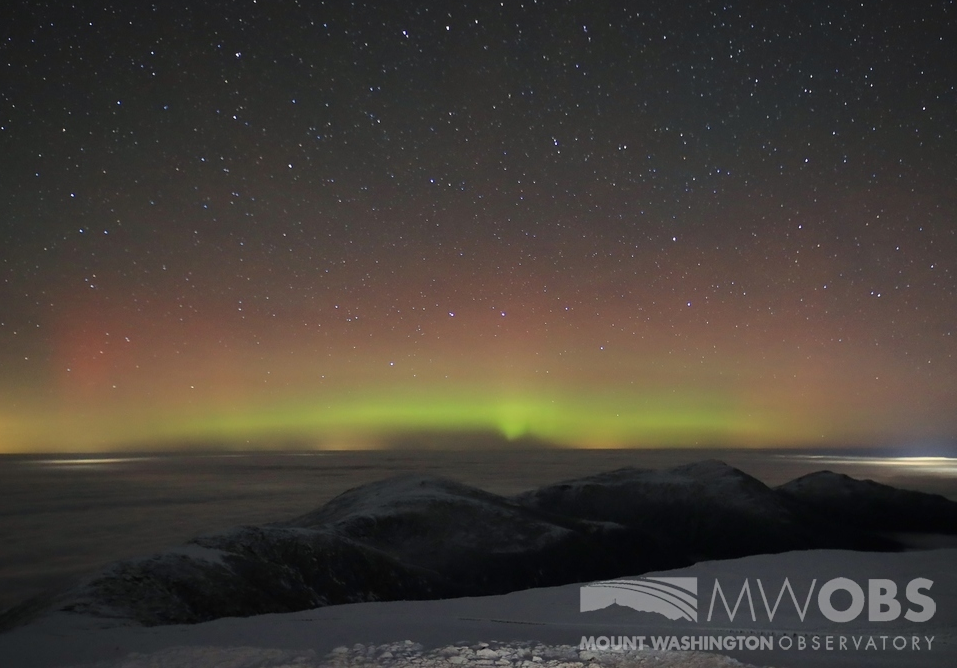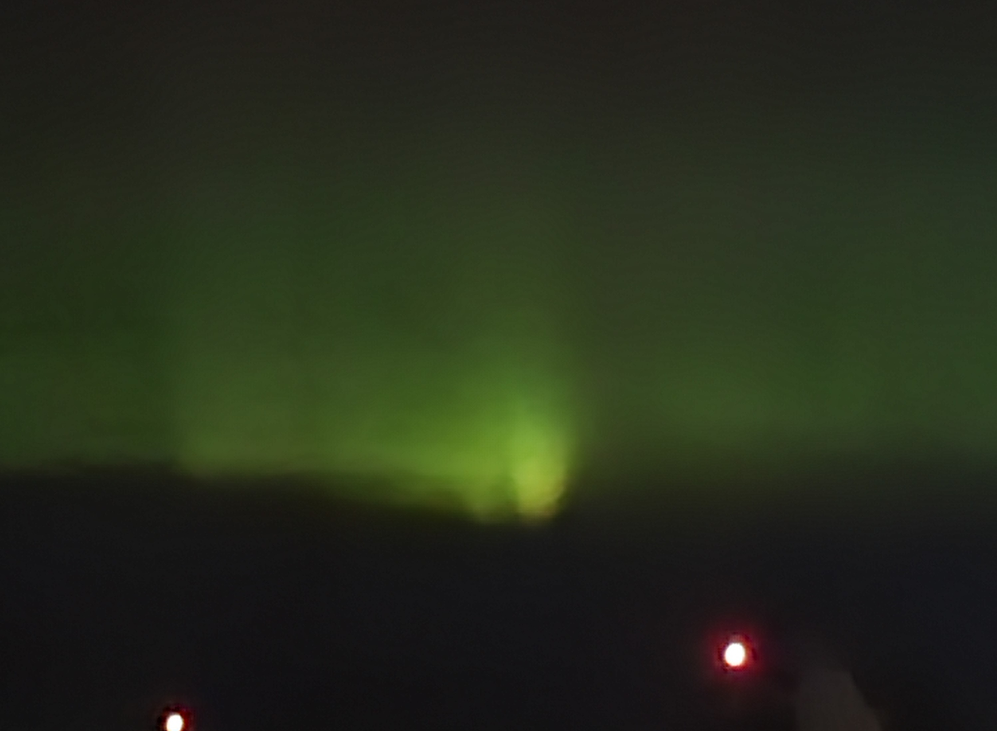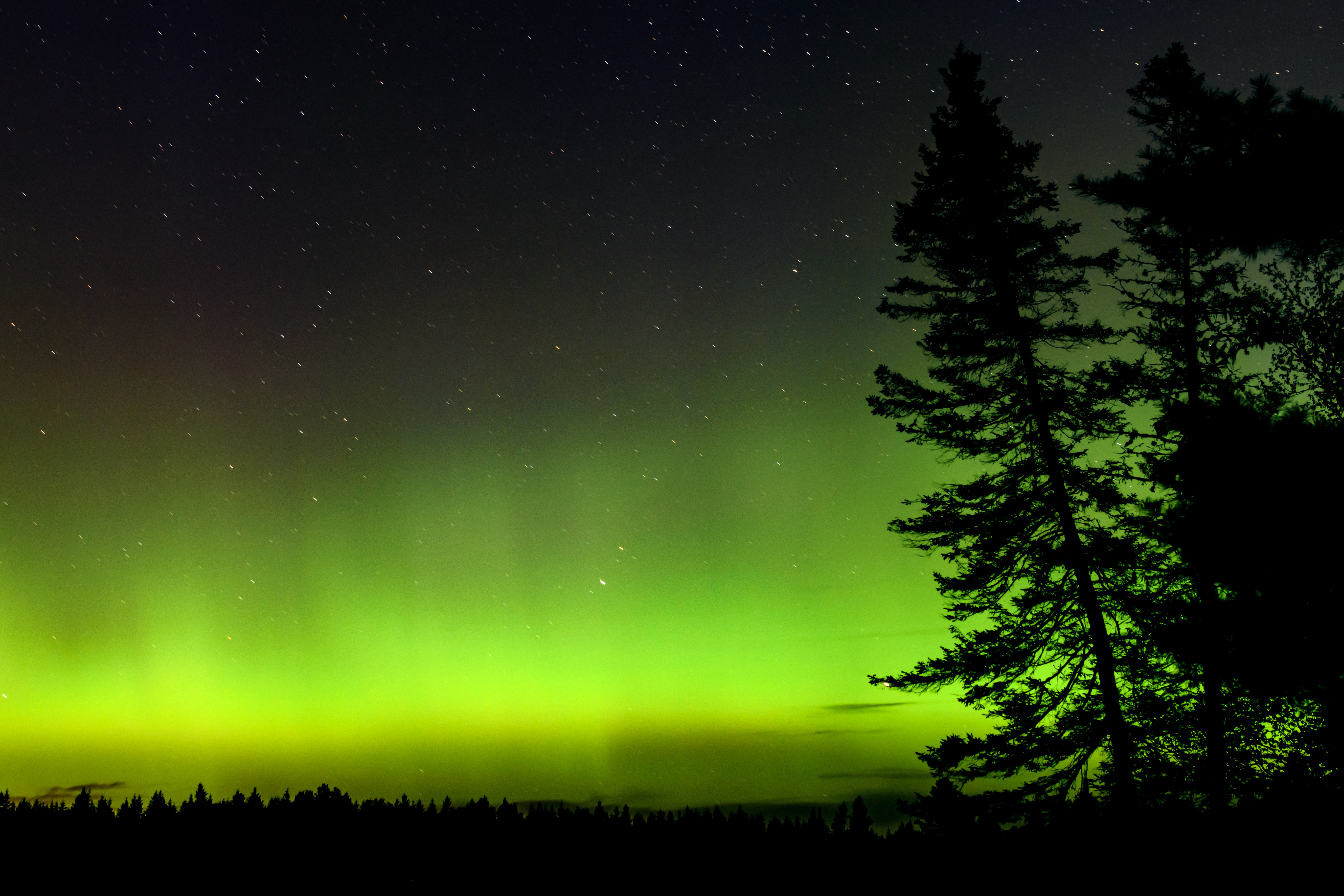Thursday: Sun to wispy clouds. Highs in the 40s. Thursday night: Partly cloudy. Lows in the 30s. Friday: Sunny start, showers late. Highs in the 50s south, 40s north. Saturday: More clouds than sun with the chance of a shower. Highs around 50.
The northern lights, scientifically termed aurora borealis, are a mesmerizing spectacle in the night sky — and they might be visible overnight in parts of New England.
Ignited by solar storms, these colorful displays occur due to interactions between charged particles emitted by the sun and Earth's atmosphere, primarily oxygen and nitrogen.
WATCH ANYTIME FOR FREE
Stream NBC10 Boston news for free, 24/7, wherever you are. |
Pre-dawn Friday, New England will have a swing at viewing the lights. They'll become visible for far northern latitudes by late Thursday evening, but the lights will peak in the upper-mid latitudes between midnight and 4 a.m. Friday.
The lights late Thursday will Illuminate at Kp6 or G2 moderate geomagnetic storm strength, increasing to a K7 or G3 strong geomagnetic storm strength after midnight. While there will be some clouds out there, it should not come in the way of you viewing the lights, as clouds will not be too thick, yet.
Get updates on what's happening in Boston to your inbox. Sign up for our News Headlines newsletter.
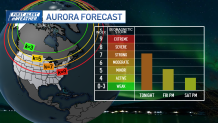
If you’re thinking that the northern lights have been visible in New England more than usual lately, you’re right!
Understanding the sun cycle is crucial to learning about the aurora. The sun, a massive orb of burning gases, acts and reacts on a cycle that spans 11 to 15 years. This begins and ends with low activity and peaks in the middle, when the sun’s surface is most active.
During active phases, marked by increased sunspots, temperature discrepancies between cooler sunspots and the sun's fiery surface prompt reactions like solar flares and geomagnetic storms for the sun to maintain equilibrium or equal temperature along the surface. These events generate stronger solar winds that propel charged ions toward Earth.
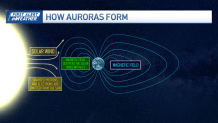
Upon reaching Earth, the magnetosphere shields the planet from most charged particles, except near the poles. When these solar ions enter near the poles and interact with atmospheric gases, they emit colorful light, giving rise to the northern lights.
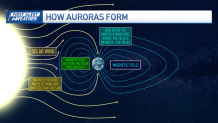
The stronger the solar wind, the more brilliant the colors and the further south (in the Northern Hemisphere) the lights span.
The sun is currently approaching a maximum for activity. The middle of 2024 is projected to be the peak of activity in the current cycle.
So, yes, we’re witnessing heightened aurora activity. Notably, in April 2023, a strong geomagnetic storm brought visible auroras to the southern-central United States — a rare occurrence but not unprecedented. Historically, the northern lights have appeared as far south as Honolulu, in the late 1800s.
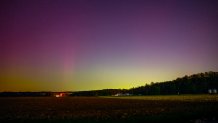
As we approach the peak of the current solar cycle, expect amplified aurora activity through 2025. The best viewing is from September to March after heightened geomagnetic activity.
Do not trust seven-day geomagnetic forecasts — it is more of a "nowcast," day-of kind of event.
The northern tier of the U.S. sees the most vibrant colors, including Maine, Vermont and New Hampshire. Be sure to view under darker skies with minimal moonlight.
Beyond 2025, the next solar maximum will occur between 2036 and 2041.

